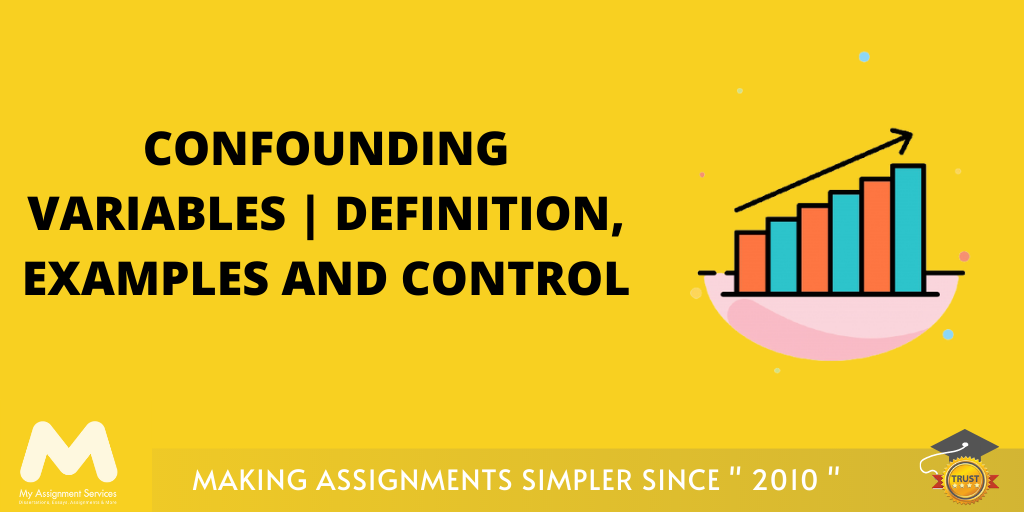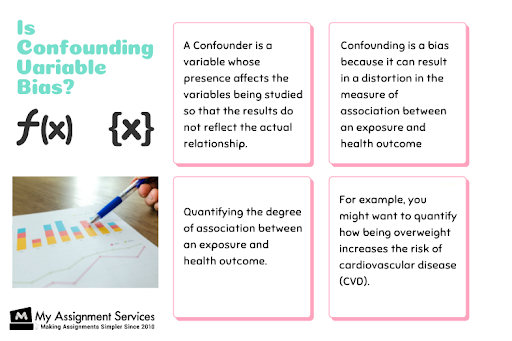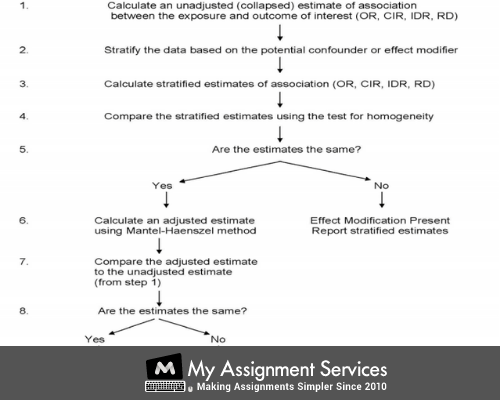
Different researches have been undertaken to understand the cause-and-effect relationship in psychology. Within this, there comes a third variable that has an influence on both the cause and effect in that relationship. This is known as the confounding variable. To get accurate outcomes, it becomes necessary to consider all the confounding variables that are related to that relationship.
In this blog, our statistics assignment help experts will talk about the definition of a confounding variable and explore some of its salient features so that you understand it well. Not just this, we will also provide you with some easy-to-understand confounding variables examples so that you can apply them in your own work.
My Assignment Services is a concrete source of information for millions of students in the United Kingdom and all across the globe. With the help of our intricately designed reference assignment solutions, we have made assignments simpler for students worldwide. So, let us dive deeper into the world of confounding variables to get an idea of how different cause-and-effect relationships work.

These are some of the extraneous variables that have an influence on both dependent and independent variables in a given study. There are two points that a variable has to fulfil in order to be a confounder. These are:
Still, not clear with the definition of a confounding variable? We know exactly what needs to be done. Our statistics assignment help experts will now provide you with some confounding variables examples to ease this definition further for you.
Over the years, a lot of students have faced numerous issues in understanding this concept. Thus, they turned to our experts for guidance on this. Fortunately, our industry veterans have catered to each of the queries of students well and come up with all the answers for them instantly.
You are not alone if you do not understand this confounding variable definition; there are so many like you who get stuck while understanding this. Worry not, we have already covered it for you with the help of this confounding variable example.
Example: For instance, you collect some data on the consumption of ice cream and also on the number of sunburns people are facing in the UK. Coincidently, you find out that the more the ice cream consumption, the probability of sunburn also increases. However, is it true that only those people who have ice cream have a sunburn?
In this data, the temperature becomes the confounding variable. This is what has the influence both on people having more ice cream and getting sunburns due to excessive time spent under the sun.
Probably, now you have understood this confounding variable definition. The next task is to reduce the impact of these variables so that the outcomes are accurate. Our statistics assignment help experts mostly use four methods for this. Let us quickly discuss each of those methods in brief.
Though there will always be some advantages and disadvantages associated with each of the methods, we consider these to be the most effective ones when it comes to reducing the impact of the confounding variables. Our experts have been using them and got accurate results.
These are:
This is the method in which we restrict ourselves by just talking about those subjects that have the same confounding factors value. For example, You want to undertake research on whether or not a low-carb diet is responsible for weight loss. You also know that there are so many other factors that are responsible for weight loss. Thus, you decide to restrict the study to women who are above 45 years of age.
In this method, we try to go for the same comparison and treatment group. The condition that applies here is that each member in the comparison group must have a counterpart in the other group. Both of them must have the same confounders, but unique independent variables.
Example: For instance, you include different factors like age, sex, exercise, and educational level to know the relationship between weight loss and a low-carb diet. You get to study different things for a wider range of men and women now. Each of the traits is matched to find out accurate outcomes.
If you already have the statistical data with you, then you can use confounding variables in the form of control variables within the different regression models that you use in your study.
These are the three ways by which you can reduce the impact of confounding variables. This is how we write the solutions for these assignments.

If you need the complete solutions of these assignments, then our statistics assignment help experts are all at your disposal. You can reach out to us via our interactive live sessions whenever you get stuck with these. We will be happy to help you come out with all the required information within a few moments.
Authenticity is something that is considered to be one of the most pivotal aspects of an assignment. For this, we use Plagiarism to check the originality of our work. Not just this, our experts also send a free copy of this report to you so that you get assured of our 100% original work. Other than this, there’s a lot more to grab from our statistics assignment help experts. Fill up the order now form to know more about them.

Hello everyone! My name is John Mill and I am a Chartered Financial Analyst (CFA). I have done an MBA and am currently working as a senior financial analyst. I have received the “Top Analyst Award” for how innovative and proficient I am in market analysis. I have been contributing to students’ education through OAE by sharing what I have learned with over a decade of experience.
1,212,718Orders
4.9/5Rating
5,063Experts
Turnitin Report
$10.00Proofreading and Editing
$9.00Per PageConsultation with Expert
$35.00Per HourLive Session 1-on-1
$40.00Per 30 min.Quality Check
$25.00Total
FreeGet
500 Words Free
on your assignment today
Trending now
The Student Corner
Subscribe to get updates, offers and assignment tips right in your inbox.
Popular Posts
Popular Posts
Request Callback
Doing your Assignment with our resources is simple, take Expert assistance to ensure HD Grades. Here you Go....
Lock in your expert now.
Pay the rest only after you're 100% satisfied.
Why this is a no-brainer:
Loved reading this Blog? Share your valuable thoughts in the comment section.
Add comment